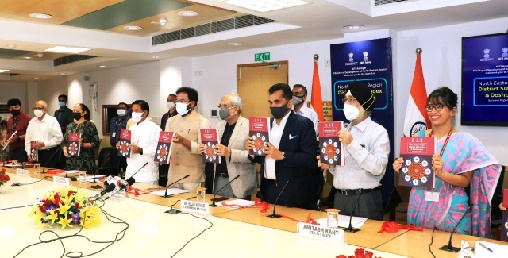 Agartala, Aug 27: Gomati and North Tripura districts of Tripura ranked second as per the first edition of North East Region District SDG Index and Dashboard released by the NITI Aayog and the Ministry of DoNER on Thursday.
Agartala, Aug 27: Gomati and North Tripura districts of Tripura ranked second as per the first edition of North East Region District SDG Index and Dashboard released by the NITI Aayog and the Ministry of DoNER on Thursday.
According to a PIB press release, out of the 103 districts considered for ranking, 64 districts belonged to the Front Runner category while 39 districts were in the Performer category in the composite score and ranking of districts.
All districts in Sikkim and Tripura fall in the Front Runner category and there are no districts in the Aspirant or Achiever categories, the press release said.
East Sikkim (Score 75.87) ranked first in the region followed by Gomati and North Tripura district (Score 75.73) in second position. The score for the 103 districts ranges from 53.00 in Kiphire (Nagaland) to 75.87 in East Sikkim (Sikkim).
The NER District SDG Index and Dashboard, a collaborative effort by NITI Aayog and Ministry of DoNER, with technical support from UNDP, is the first of its kind in the country as it focuses on the North Eastern Region, which is of critical significance to the country’s development trajectory.
The Index measures the performance of the districts of the eight States of Arunachal Pradesh, Assam, Manipur, Meghalaya, Mizoram, Nagaland, Sikkim and Tripura on the Sustainable Development Goals and their corresponding targets and ranks the districts based on the same.
The index is based on NITI Aayog’s SDG India Index –the principal and official tool for monitoring progress on the SDGs at the national and State/ Union Territory levels and shares the common ethos of benchmarking performance and ranking on the SDGs to foster competition among the districts.
The index offers insights into the social, economic, and environmental status of the region and its districts in their march towards achieving the SDGs. It is a unique policy tool which has immense potential to measure district level progress, highlight critical gaps, facilitate resource allocation, and will be a handy tool for policy makers in the eight North Eastern States, Ministry of DoNER and other Union Ministries.
NITI Aayog Vice Chairperson, Dr Rajiv Kumar; Union Minister of Development of North Eastern Region, G.Kishan Reddy; and Union Minister of State for Development of North Eastern Region, B.L. Verma, launched the report titled, North Eastern Region District SDG Index & Dashboard: Baseline Report 2021-22, in the presence of Amitabh Kant, CEO, NITI Aayog; Dr. Inder Jit Singh, Secretary, Ministry of DoNER; Nadia Rasheed, Resident Representative (i/c), UNDP; and Sanyukta Samaddar, Adviser(SDG), NITI Aayog.
The launch was also attended virtually by Chief Secretaries, Additional Chief Secretaries, Principal Secretaries, and other senior State Governments officials of Arunachal Pradesh, Assam, Manipur, Meghalaya, Mizoram, Nagaland, Sikkim, and Tripura.
In his remarks, the NITI Aayog Vice Chairman stated, “The North Eastern Region District SDG Index is an important milestone in our SDG journey aimed at leaving no one behind and will strengthen SDG localization, by putting the districts, especially in our 8 North-eastern States, at the forefront of SDG adoption, implementation, and monitoring.”
The Union Minister of DONER in his address said, “The North Eastern Region District SDG Index will help in evidence-based planning, resource allocation, both financial as well as others, and effective supervision and monitoring of the developmental efforts for focused and balanced regional development.”
According to the press release, the NER District SDG Index aims at delineating progress at the district level on a basket of indicators and enhancing analytical understanding of sectoral issues as well as data gaps, while assisting in designing future courses of action in the region. The modular nature of the index makes it a policy tool and a ready reckoner for gauging progress of districts on the expansive set of the Global Goals, including health, education, gender, economic growth, institutions, climate change and environment, among others.